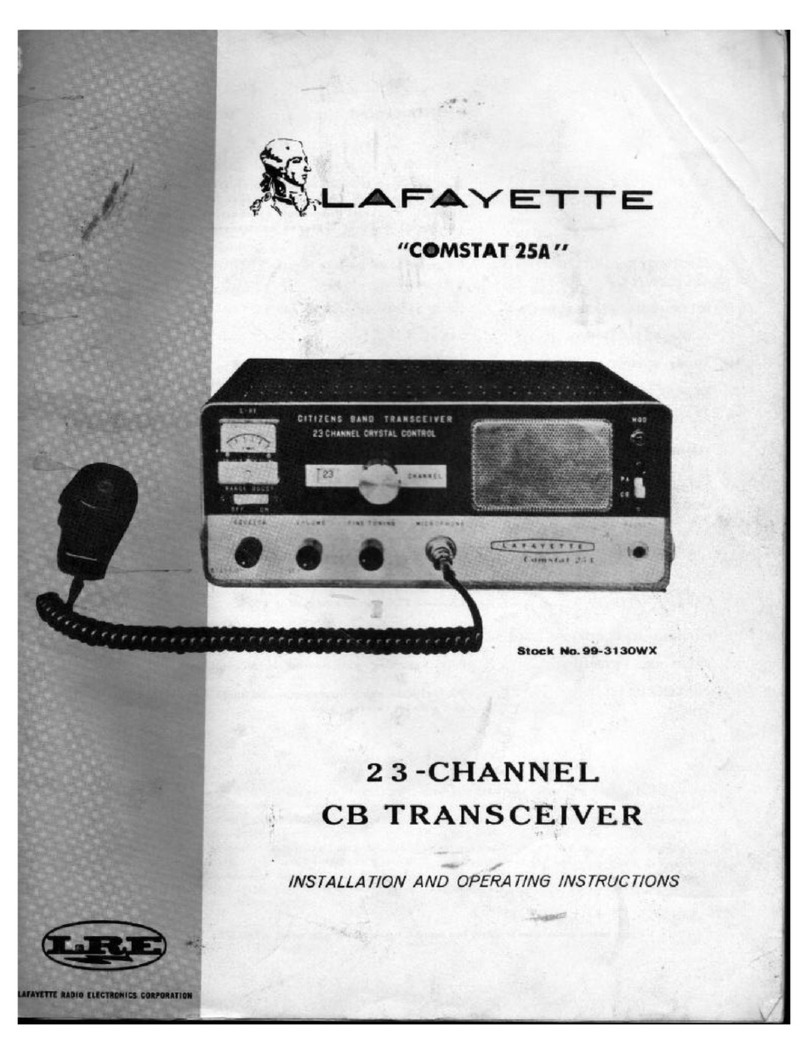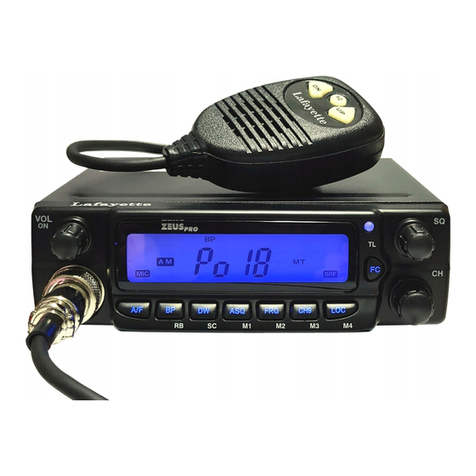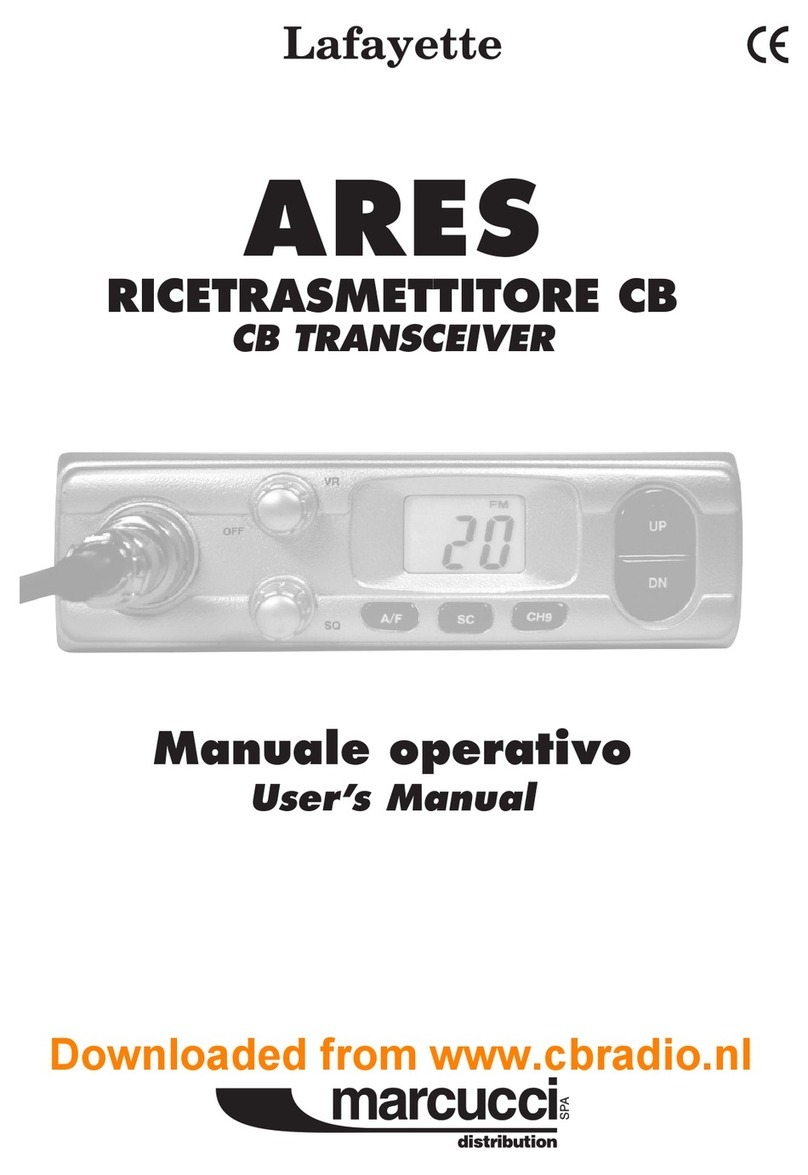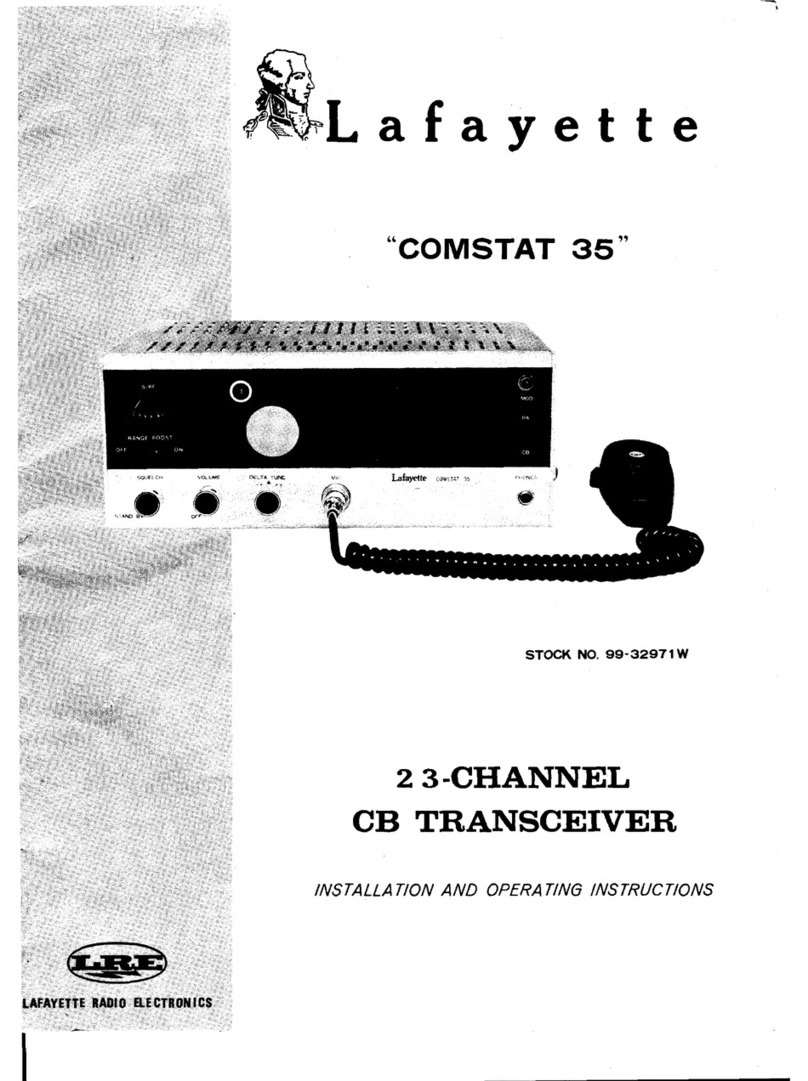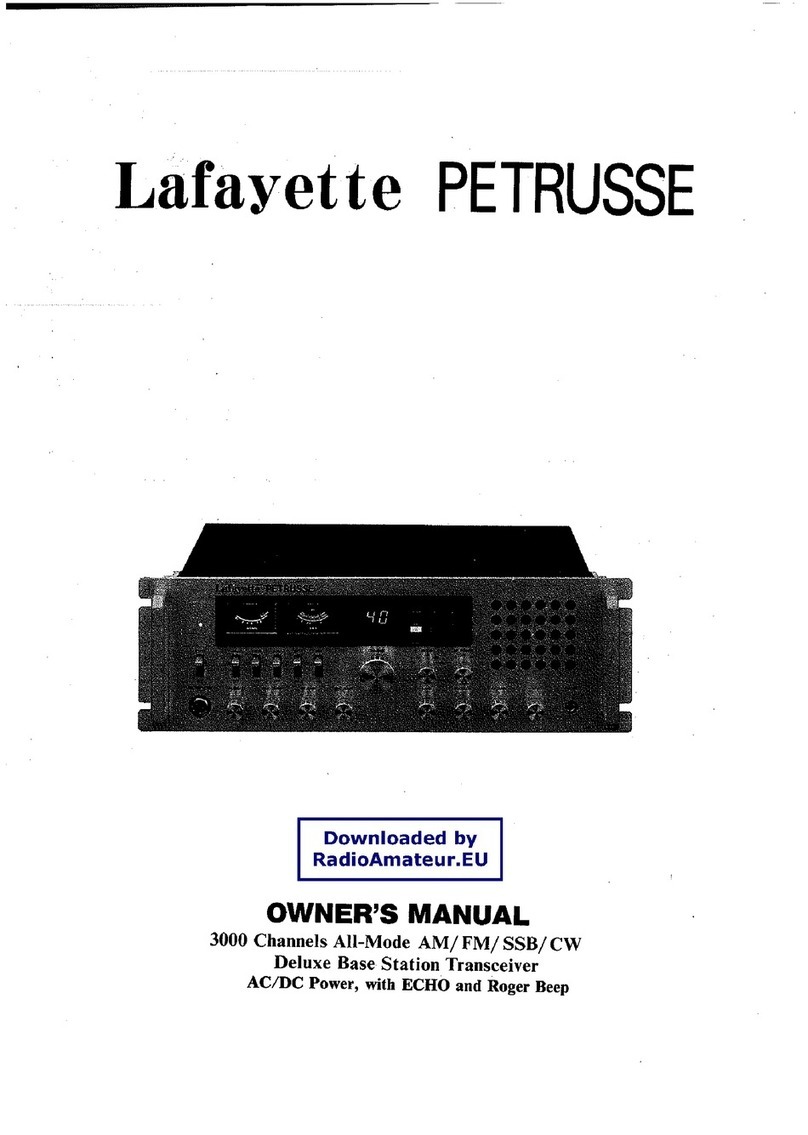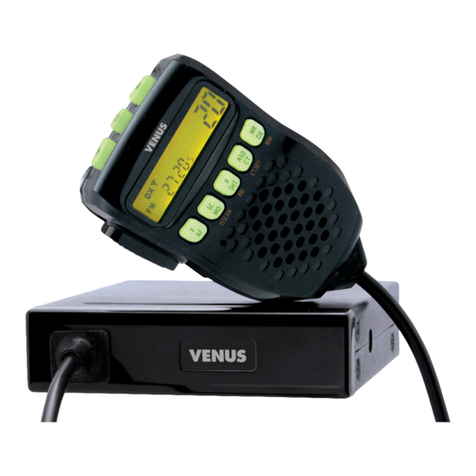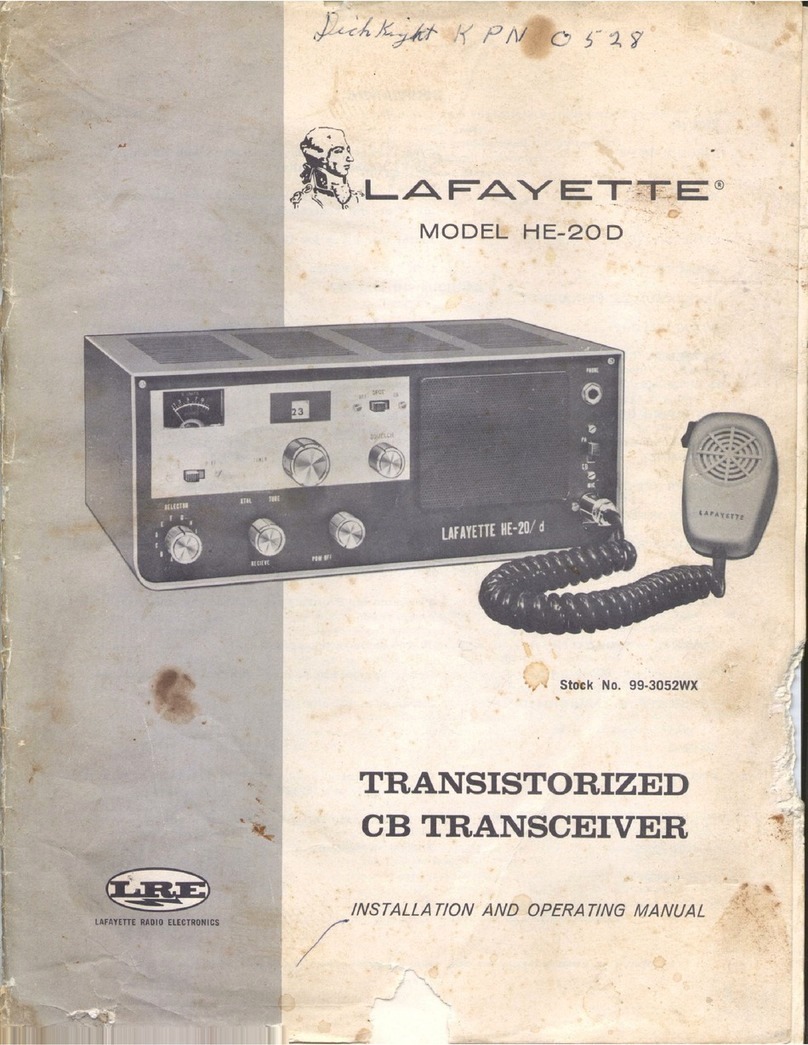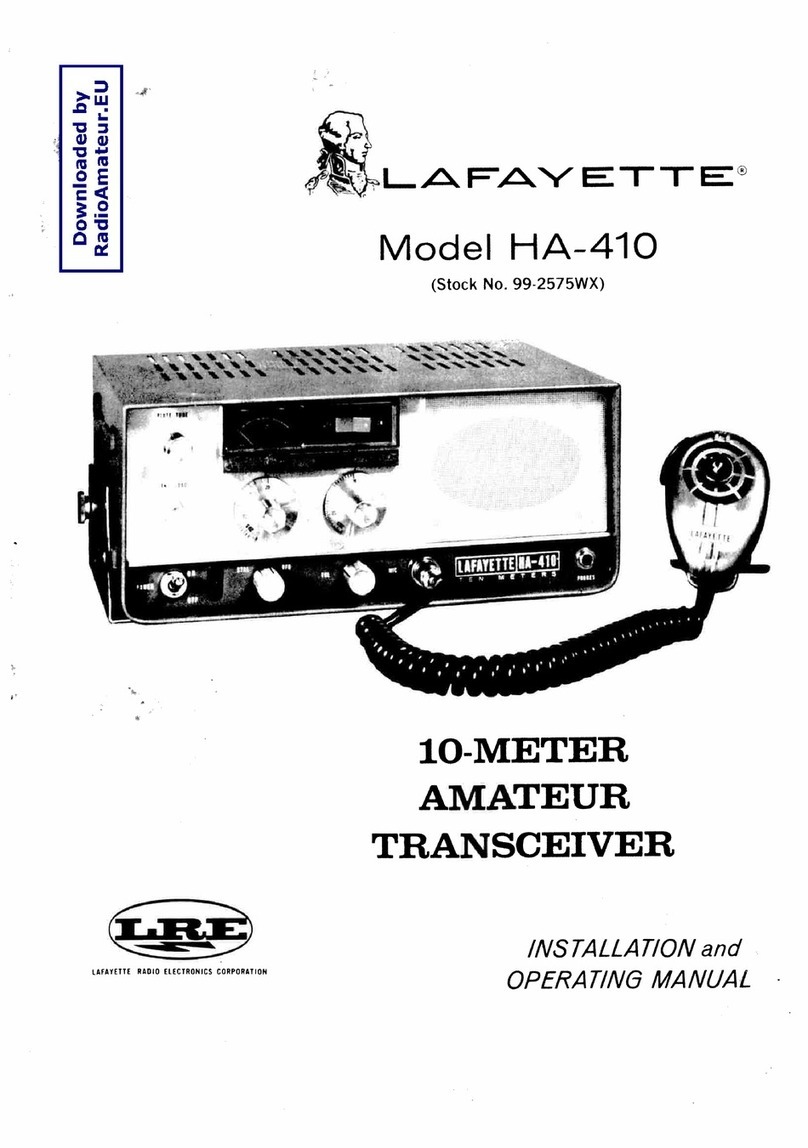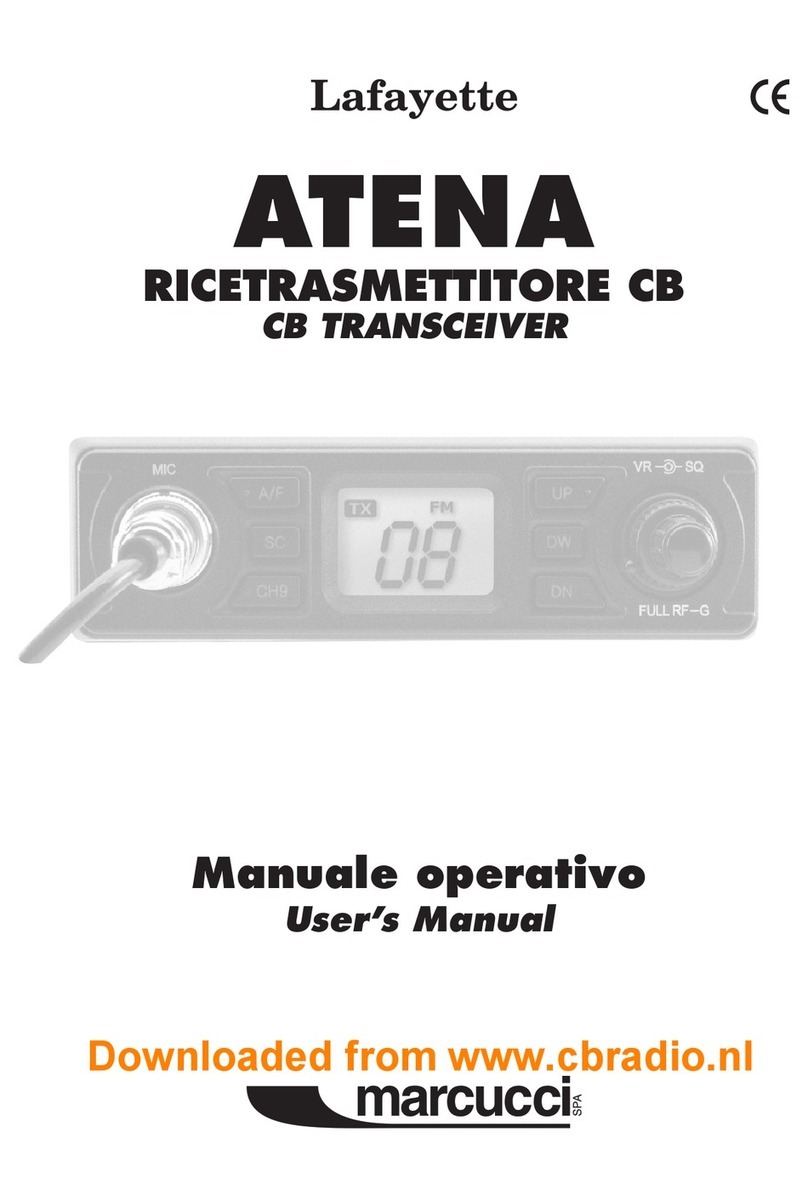ITALIANO
si attiva la scansione di tutti i 40 canali.
Lo scansione si arresta su ogni canale occupato e si ferma sul canale per 10 secondi dopo la
conclusione della conversazione, quindi la scansione riprende.
Per attivare questa funzione premere il pulsante scansione, sul display viene visualizzato SCAN.
Per arrestare la funzione premere nuovamente il pulsante scansione o il pulsante PTT sul microfono.
Questo pulsante può inoltre, se viene premuto dopo il pulsante FUN, essere utilizzato per
memorizzare o richiamare un canale in memoria.
Come utilizzare la funzione di memoria
Per memorizzare un canale:
Selezionare il canale da memorizzare utilizzando il selettore canale.
Premere il pulsante FUN.
Premere a lungo il pulsante M1~M4 corrispondente alla memoria da utilizzare.
Un segnale acustico (beep) indica che il canale è stato memorizzato ed il pulsante FUN
viene rilasciato.
Per richiamare un canale memorizzato:
Premere il pulsante FUN.
Premere il pulsante M1~M4 corrispondente alla memoria da richiamare.
Il canale desiderato verrà chiamato ed il numero della memoria sarà visualizzato sul display.
10 - Pulsante DW/M2 (Dual Watch/Memoria 2)
La funzione di Dual Watch offre la possibilità di monitorare allo stesso tempo due canali diversi.
Premendo il pulsante DW sul display viene visualizzato DW ed è possibile selezionare i due
canali da monitorare utilizzando il selettore canale.
I due canali verranno quindi monitorati ogni 0.5 secondi e visualizzati sul display in alternanza.
Se si rileva un segnale su uno dei due canali, la funzione di DW si arresta ed attende per 5
secondi. Se non si agisce, la funzione riprende dopo 5 secondi; premendo il pulsante PTT
l’apparecchio si sposta sull’ultimo canale ricevuto.
La funzione di Dual Watch riprende 5 secondi dopo la chiusura della trasmissione.
Per interrompere la funzione di Dual Watch premere nuovamente il pulsante DW.
11 - Pulsante CH9/M3 (Emergenza/Memoria 3)
Questa funzione viene utilizzata per l’accesso rapido al canale 9 (emergenza).
Premere questo pulsante per effettuare le chiamate di emergenza; sul display lampeggia
l’indicazione CH 9.
12 - Pulsante ASQ/M4(Squelch automatico/Memoria 4)
Il pulsante ASQ corrisponde alla funzione di controllo automatico dello squelch; premendo questo
pulsante sul display si visualizza l’indicazione AQ e si abilita la funzione di Squelch automatico.
Utilizzare la funzione di ASQ in presenza di molti rumori irregolari.
Quando la funzione di ASQ è attiva, la funzione di controllo manuale dello Squelch non funziona.
NB: Un pulsante per il controllo della funzione ASQ si trova anche sul microfono.
1
2
3
4
1
2
3
